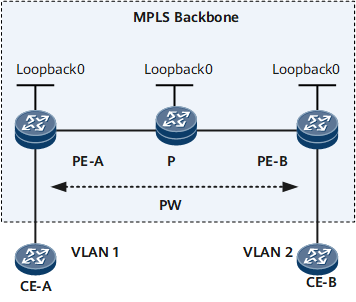LSP Jitter Test
An NQA label switched path (LSP) jitter test measures the jitter, delay, and packet loss ratio on Label Distribution Protocol (LDP) LSPs and TE LSPs using timestamped UDP packets. Figure 1 illustrates a network on which an LSP jitter test is performed. The LSP jitter test process is as follows:
The NQA client (PE-A) constructs a UDP MPLS Echo Request message with the destination IP field set to an IP address on the network segment 127.0.0.0/8. After that, the NQA client searches for the LDP LSP based on the specified remote LSR ID and forwards the message through the LDP LSP in the MPLS domain. For a TE LSP, the message can be sent by a tunnel interface and forwarded along a specified CR-LSP.
The egress of the LSP (PE-B) monitors port 3503, marks each received packet with a timestamp, and replies with an MPLS Echo Reply message.
After receiving the MPLS Echo Reply message, the NQA client calculates the packet jitter by subtracting the interval between receipts of packets on the egress from the interval between transmissions of packets on the NQA client.
Using the received MPLS Echo Reply message, the NQA client calculates the maximum, minimum, and average jitter time in the transmission of the UDP packet from the NQA client to the egress. The data obtained is used to evaluate the network status.
